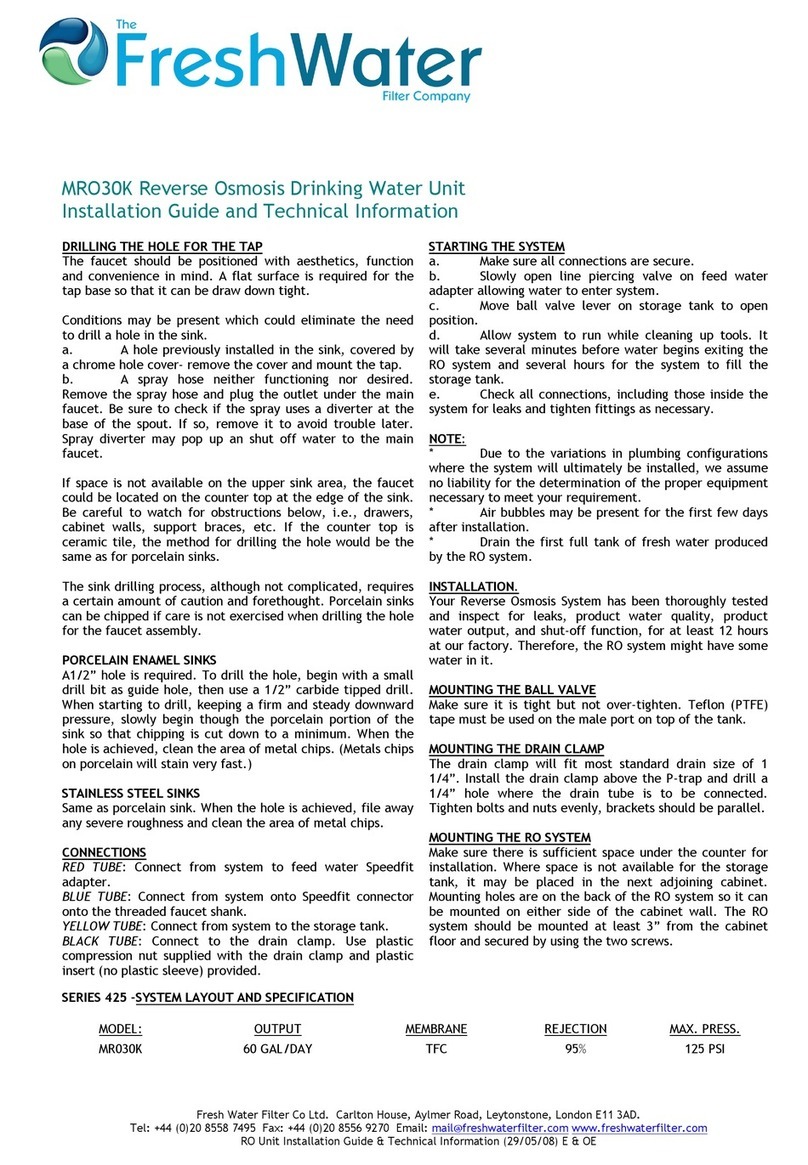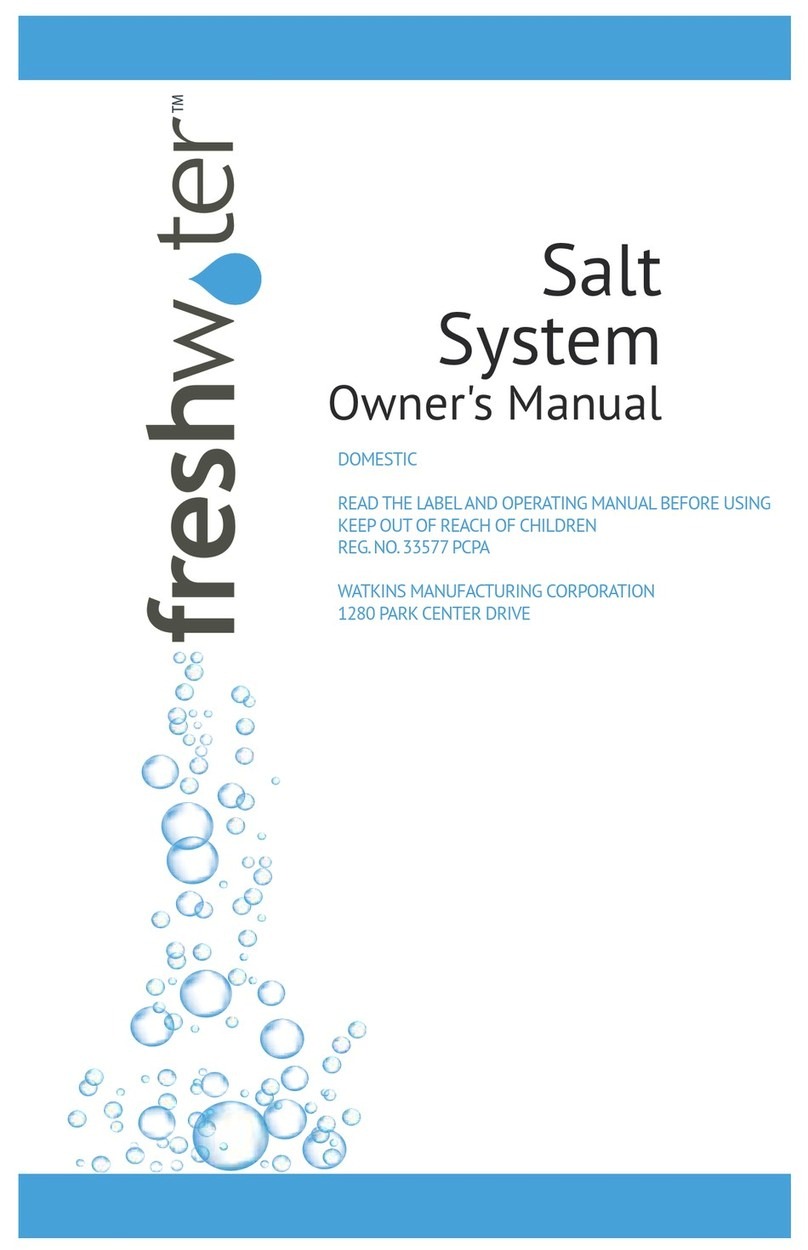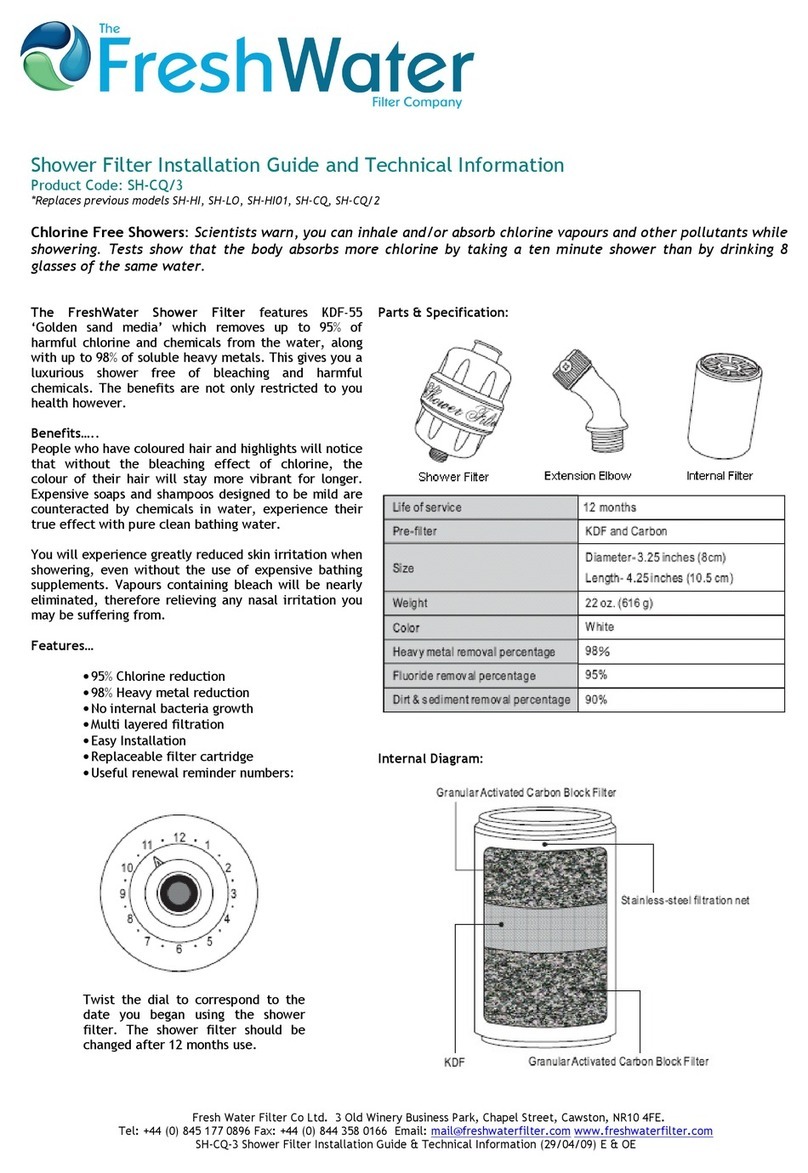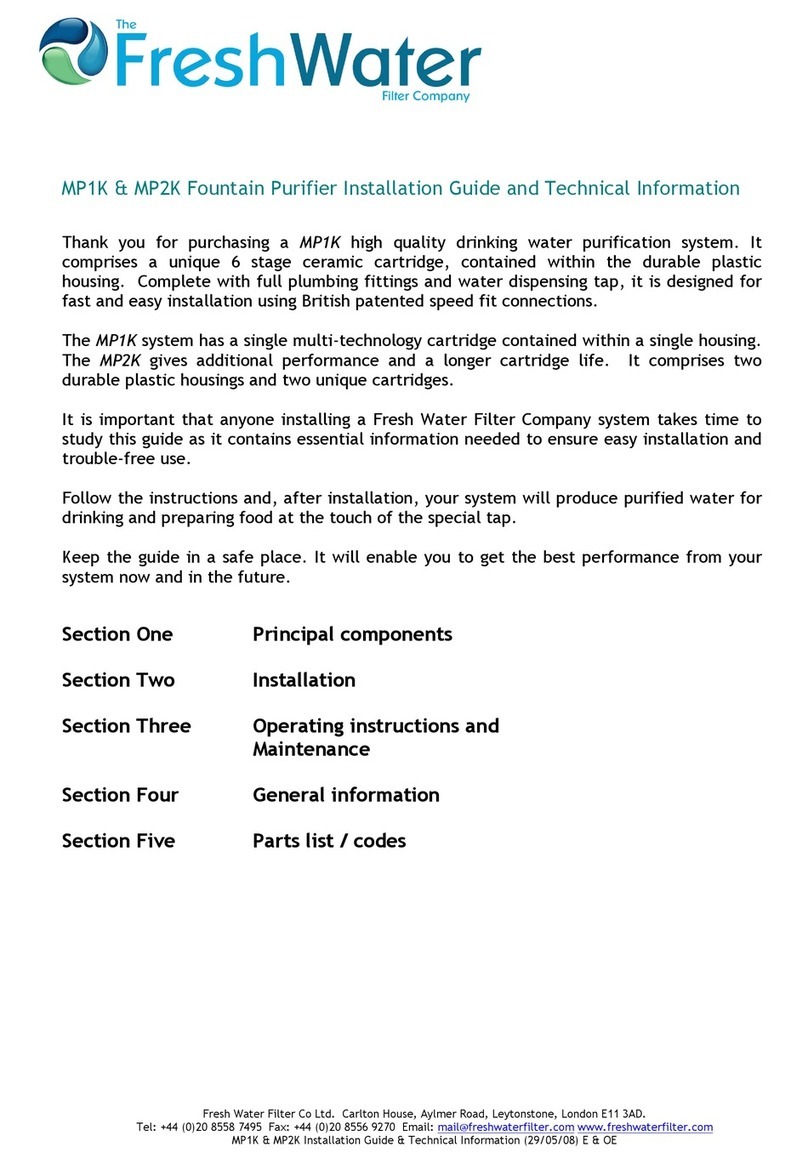
‘Spring’ MTP/K Installation Guide and Technical Information
Fresh Water Filter Co td. Carlton House, Aylmer Road, eytonstone, ondon E11 3AD.
Tel: +44 (0)20 8558 7495 Fax: +44 (0)20 8556 9270 Email: mail@freshwaterfilter.com www.freshwaterfilter.com
MTPK Installation Guide & Technical Information (29/05/08) E & OE
b) Check that the cold water tap is
turn on and pull the pin outward on the
diverter valve (4).
c) Check that all the pipes are
connected correctly, especial the
water flow direction.
4. LO ATER FLO
a) Check that you have removed all
the wrapping from a new filter
cartridge.
b) ow water pressure. During periods
of high water demand especially when
most gardens hose are in use, the
pressure may fall and so will the water
flow from the filter. Running a bath,
shower or appliance connected to same
line on which your FRESH WATER
FI TER system is connected may starve
the unit of water.
c) During use, low water flow may be
an indication that the filter is
becoming blocked as it collects the
unwanted debris and pollutants from
the water. (See cleaning instructions,
Section Two, 3.)
d) The filter system needs a minimum
pressure of 1.4 Bar (approximately 20
psi) to work. As a general rule, the
higher the pressure generally the
greater the water flow will be. If the
pressure is inadequate a pump may be
needed, and for this you should
contact the manufacturer or a
plumber.
e) If the flow does not return to its
former level immediately after
cleaning the ceramic cartridge will
need replacement.
5. HIGH ATER FLO
If the water flow has excessive force,
this will lead not only to splashing at
the tap but also lower performance
from the filter. Reduce the flow rate
to the minimum acceptable by adjust
the cold tap. For optimum
performance we suggest a flow rate of
1.5 to 2 litres per minute or less.
6. ATER APPEARANCE
WHITE water. When a fresh ceramic
cartridge is installed or after cleaning,
the water may appear milky or white
for a while. It is quite harmless and
will soon clear. White water is due to
micro-bubbles of air.
a) On standing, the water will
become clear as the bubbles move
upwards. Water in some areas of
the country of more prone to this
than others.
b) B ACK water. On setting up your
system after cleaning or if it is
disturbed for any reason, very fine
black particles may occur in the
water. Again this is quite normal
and the particles are harmless
carbon. Flushing the system for a
few minutes by turning the tap on
and off rapidly several times will
help to clear this.
c) CO OURED water (often RED).
Water in some areas may be high in
dissolved iron and this can pass
through the filter. When the water
is left to stand, dissolved iron gives a
red or brown colour as the iron
oxidises (rusts). In very severe cases
you should contact the manufacturer
for specialist advice. Ordinary rust
particles in the water will be
removed by the system.
7. ATER TASTE
a) To the palates of most people,
filtered and treated water tastes so
much better than unfiltered water.
There are also some people who
cannot detect any change. Others
find that the treated water tastes
“different”, but they will soon
become accustomed to the taste of
the purer water.
b) A major factor affecting taste
may be the natural composition in a
particular area. There can be
considerable local differences in the
mineral content of the water for
example. The ‘natural’ taste of an
area’s water is often masked by the
presence of chlorine used in the
treatment process. If the chlorine
taste consistently reappears, the
cartridge should be replaced.
c) If after prolonged standing or
during infrequent use any strong
objectionable taste occurs, flush the
system by running water for 5
minutes and if the taste persists
carry out the sanitising process (see
Section Four, 9).
8. ATER LEAKS
a) Your system has been individually
pressure tested before leaving the
factory. In the unlikely event of a
fault, small leaks sometimes do
occur as a result of incorrect
assembly or abuse. The following
tips may be helpful:
b)
Depending on the positioning of
the filter and the temperature of the
incoming water and air,
condensation on the outside of the
filter housing may occur, resulting in
a frosted appearance of fine water
droplets on the plastic surface. This
does not of course mean that there
is a leak in the system. The remedy
is to either insulate the area around
the filter, or reposition it.
c) Always ensure that the MP
housing seal and the areas in which
it is located are clean. Any small
piece of debris on the seal of the
surrounding area could cause a small
leak. Apply a smear of petroleum
jelly to the seal.
d) Always ensure that the filter
housing is screwed fully onto the
housing head (3).
e) In the event of a leak carefully
examine its source. Water from a
leak may run along the pipe work - it
may drip, or collect, some distance
from the actual position of the leak.
f) When the leak is found, if it is
around the housing sump and
housing head, first clean the seal
and the surrounding area and
reassemble with a smear of
petroleum jelly. If this does not
solve the problem, fit a replacement
seal.
g) If there is a leak from the spout,
check that the spout is pushed down
firmly. Ensure the “O” rings on the
spout are still in position. Apply a
smear of petroleum jelly if the seal
is dry or remove any debris that is on
the “O” rings, by running under cold
water.
h) The above should be carried out
with the water isolated, i.e. do not
pull the pin out on the diverter
valve.



























